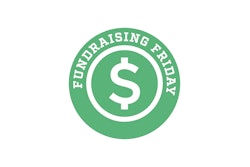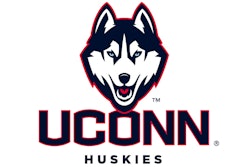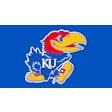
David Kelley became a student of the fundraising process out of necessity. As an athletics administrator at the high school and junior high levels 20-plus years ago in Vinton County, Ohio, Kelley taught himself how to write grants and solicit sponsorships from banks, restaurants, gas stations and other local businesses to help supplement threadbare extracurricular budgets. “The reality of my existence in interscholastic sports led me to what I teach about today,” says Kelley, sport administration professor at the University of Cincinnati and author of the textbook Sports Fundraising: Dynamic Methods for Schools, Universities and Youth Sport Organizations (Routledge, 2012). This summer he will be honored by Ohio University, the first school to implement the concept outlined in his Ph.D. dissertation of combining an advanced degree with National Interscholastic Athletic Administrators Association - Leadership Training certification. AB senior editor Paul Steinbach recently caught up with Kelley to solicit his opinions on the current state of fundraising in the athletics space.
How rare in academia is someone who studies fundraising?
I’m probably among 2%. There probably aren’t a whole lot of people. I also teach the economics of sport, finance and development, and I found that one of the things that really sets our program apart from other programs is the holistic, 360-degree type of education that we provide our students. We have courses about fantasy sports. We have courses on athletic compliance. But one of the areas I really am vetted in and focused on is primarily the interscholastic and intercollegiate side of athletics, and so as it relates to the financial components of it, I don’t have many peers in this space.
How did your athletics administration experience inform your pursuit of a Ph.D.?
I was the one who came up with the idea to train interscholastic athletic administrators online. That was my dissertation idea back in 2002 when I coupled with the NIAAA - Leadership Training courses. At that particular point in time, the industry was such that the only things that were truly being offered in academia were to train individuals for professional and college athletics. Nothing was being done for the high school athletic administrator. I thought to myself, “Well, how could this be?” And I found that there are roughly 18,000 high schools in the United States. That’s at least 18,000 ADs and assistant ADs, in some instances. Ohio U. implemented my idea and started their Master of Athletic Administration program, and then I implemented it at the University of Cincinnati in 2017. It’s been wildly successful in terms of facilitating and helping our students, not only to get their Master’s, but also to become certified with the NIAAA, which then allows them to hit the ground running in their careers. I have athletic administrators working as far east as New Hampshire and as far west as Hawaii, and everywhere in between.
Is this sort of distance learning model used for accreditation through their state and national associations, or are they actually earning academic credit from UC, or both?
They’re actually getting a Master’s degree in sport administration from the University of Cincinnati, and then, if they elect to, as an ancillary benefit, if they want to get their NIAAA certification, they can. It’s their choice.
In the decades that you’ve immersed yourself in fundraising for athletics, what has changed?
One of the things that’s going to remain and will remain probably until the day I retire and beyond, is that budget allocations will continue to remain insufficient in interscholastic athletics. Something that I found out about while I was in Vinton County, and then as I pursued my Ph.D. at Ohio U., was that, per Ohio Revised Code, which is the state law, no school district can expend monies on extracurricular activities beyond one half of 1% of a school district’s overall budget. That’s still the case.
That seems like nothing.
That’s the reason why you have the rise in the number of booster clubs, and you have a rise in the necessity to do what I refer to as episodic fundraisers, like cheerleaders washing cars or athletes going door to door. I hate the notion of turning our student-athletes into door-to-door salesmen. In fact, what I’m teaching my students is to try to consolidate their efforts toward adopting more of an advancement type of mentality that the private, parochial schools have really mastered.
Are these paid positions or volunteers?
These are paid positions within the private Catholic schools.
When you talk about the minuscule slice of the budget that athletics gets on the public school side, is it safe to say there aren’t resources to invest in full or even part-time fundraising positions?
I teach an online course currently called “Applied Financial Management Strategies in Athletics,” and I teach students what I went through in terms of the grant writing process. Then I connect them with schools in the Greater Cincinnati area to partner with so that they basically do the legwork from cradle to grave of writing a grant and then turning it over to the administrator, the AD, to apply. A lot of employers, whether they be diocesan administrators or superintendents of schools or building principals, are really wanting to hire our students because they’re coming out with a very valued skill set in terms of how to write grants and how to leverage corporate sponsorships and the like.
Do you see that more resources are being devoted to fundraising personnel at the college level than ever before?
Yeah, and they’re actually having to strategically size themselves due to the new NIL rules. I mean, so much attention is being paid to NIL that oftentimes you’re seeing fundraising fatigue on the part of people who, for example, are being approached to help build a new facility. Well, if you’re rubbing shoulders with that person who wants to build the facility, and you’re also asking them to donate to NIL, in some cases you could be shooting yourself in the foot, because you’re just creating a situation where the person’s being asked way too often. Athletic departments at the collegiate level have to be really careful in terms of understanding and listening to their donors as to what they want to donate to. They are trying more and more to steer the conversation toward NIL, because obviously that has probably more of a direct impact on overall success of the program compared to facilities.
Have you noticed that donors are motivated by certain target areas — facilities, department position and scholarship endowments, NIL — over others?
Based on the research that I’m familiar with, I know that female donors are more consistent with wanting to help balance things in terms of the Title IX equation. They also want to provide more of a holistic benefit for the student-athletes in terms of helping with scholarships and things of that nature as they matriculate through the process, knowing that most are not going to be professional athletes. Whereas, now, I think more male donors, at least based on what I’ve seen, are being steered — not necessarily away from facilities and scholarships and things of that nature — but there has been, I think, an incremental change to get them more focused on the NIL.
Is putting one’s name on something concrete still alluring to big-money donors?
Yeah. In fact, we’re in the midst of building a football practice facility on our campus right now. We just celebrated our 15-year anniversary as an academic program, and a few months ago, we took a tour of that facility. There isn’t a room or conference center or anything that doesn’t have the opportunity to put a name on it. It could be, you know, the Paul Steinbach Conference Center, or it could be the Dave Kelley Nutrition Center. The point being is that there are hundreds of opportunities for naming rights, just within the facility itself, beyond the people — Larry Sheakley and his wife — who now have the overall facility naming rights.
As for the program you’ve established at Cincinnati, does the athletic department ever tap into your expertise? Are you ever consulted regarding the fundraising for a project like that indoor practice facility, or is that completely divorced of your program?
It’s not necessarily completely divorced, because we have a lot of students that work as interns in the athletic department, among all the different areas. It could be student-athlete services. It could be the UCATS department, which is the fundraising arm of the university athletic department. But as far as like reaching out to me specifically for consultation, no, not necessarily. I’ve reached out to them to have them come into classes to speak to the students about the sorts of things that they’re doing. And then in my "Sport Facilities and Event Management" class, I typically have our students go through so that they get a chance to see behind the scenes of what is being constructed.
AB Today tracked nearly a billion dollars in single-source donations to athletics organizations last year, and admittedly that’s an incomplete accounting. Do you point out headline-grabbing gift amounts to students in your classes?
When I teach them about how you go about raising the money, there’s an old adage called the 80/20 principle, which is now more like 90/10 — 90% of the money that you ever get in a fundraising endeavor is going to come from only 10% of your constituents. So, how do you actually get at those 10%? I walk them through the process of utilizing data analytics and predictive analytics, and how you numerically score people on their linkage, ability and interest in a particular project. If the lead gift happens to be $8 million, that’s certainly something that you’re going to have at least a four-to-one ratio. Of people who are linked, have the ability and have an interest in what you’re doing, it’s going to take four asks, at the very least, in order to get someone to say yes. I approach it from that standpoint. The actual number probably isn’t as relevant, but in terms of teaching them the process, the notion of getting 1,000 people to donate $100,000 is never going to work. It’s the 90/10 principle.
Has the ask itself changed over the decades? Are there new techniques to identify and then approach potential donors?
The way in which I interpret it is you have to be really careful as to who’s the one making the ask. If I’m a development officer, I might want to bring a heavy-hitter donor who’s donated a lot of money to come with me to a face-to-face lunch or dinner with the prospect, because at the end of the day, if you don’t have that type of person with you, and you’re asking this person for $8 million, they’re going to look at you and say, “Well, what have you given?” "You know, I’m just an officer.” I think it’s vitally important that when the ask is made, it’s actually strategically done in a way where you have someone who has given significantly in the past — in whatever range you’re looking for — so that person can put their arm around the other person and say, “Look, this is what I believe in. This is what I’ve given. That’s the reason why we want you to be a part of it, as well.” I think that, in and of itself, has maybe changed over the last 30 years.
I have to think alumni represent a rich universe from which to identify prospects.
Oh, yeah. And there also has to be interest. I tell my students, just because Oprah Winfrey or Elon Musk or Mark Zuckerberg have a lot of money, you still have to have those three elements of linkage, ability and interest. And the interest part is probably just as strong as the linkage part. Ability is actually the least reliable indicator of charitable giving. Just because someone has a ton of money doesn’t necessarily mean that they’re going to give. There has to be a linkage, like being an alumnus, but then is there interest? Are they a season ticket holder? How long have they been a season ticket holder? Have they contributed to the athletic program in the past? Those sorts of things demonstrate overall interest in the program. When you have all three things working together for you, that really makes a strong case for support.
Does the affinity people feel for their sports teams make athletics fundraising easier than, say, fundraising for the arts?
I would say so. The affinity really lends itself to defining the magnitude of the gift that you’re seeking.
I mentioned the single-source donations that may show up in a headline, but a lot of schools host a “Day of Giving.” How important is that approach in fundraising?
That’s more of a broad-based, annual type thing. The University of Cincinnati was established in 1819, and we had our 200-year anniversary in 2019. They had this big campaign where they wanted students, alumni, faculty, I mean anybody who had a connection to the university to give $18.19. And, boy, that event really generated a lot of money. That is a large volume, small amount of money type of endeavor.
How important is it, once you’ve identified a donor and secured their money, to maintain a relationship moving forward?
It’s probably one of the most overlooked aspects. I’m so pleased to hear your questions, because it really resonates with the stuff that I teach my students about the fundraising cycle. There’s what I refer to as prospect identification — sort of identifying who the individuals are who you’re going to approach for a potential gift. That then goes to what’s called the cultivation phase. You have to build a relationship with these people before you actually make the ask. The ask then is that solicitation phase. But then, once you’ve made the ask and you’ve received the gift, there’s what’s called the proper stewardship phase. Stewardship is oftentimes one of the more overlooked aspects of fundraising. Donors want to be made to feel like their donation made a difference, and that you want to give them the proper thanks for that. At the University of Cincinnati, they’ll do these prerecorded things. I’ll get an email from a student, open it up, and it’s a short video that says, “Hey, Dr. Kelley. Thank you so much for your donation. It really helps us students…” It’s a nice touch. It means that you took a little bit of time, put some effort into the fact that I made a donation to the school. And they do that for everybody. whether it’s $18.19 or $8 million. Donors want to be recognized in some way and thanked for their gift, whatever size it happens to be.
Can that help pave the way for repeat giving?
Oh, yes. Absolutely.
We’ve had years of NIL at the collegiate level and direct payments to student-athletes are next. An increasing number of states are approving NIL deals at the high school level. Is this a good thing?
Things typically will start at the professional level, they’ll trickle down to the collegiate level, and then from the collegiate level to the high school level — whether it’s corporate sponsorships, naming rights, whatever it happens to be. The whole issue with NIL, I think, is a little bit different. I’m not opposed to college athletes getting compensated for their name, image and likeness, but when you’re talking about high school students who are not of age to legally enter into a contract, I see exploitation all over. The sharks are in the water, and they’re just swimming right now as it relates to NIL In the high school space. And I think parents really need to be mindful of the exploitation that could occur. I caution athletic directors. If they’re being asked by their student-athletes or the parents to take a look at an NIL deal to see whether it’s a good opportunity or not, I’m advising them, “Unless you have a degree in contract law, leave that alone and direct them to go see a contract lawyer.”
At the college level, I look at the combination of NIL and the transfer portal as the freest free agency in all of sports, and it’s chaos. What’s your take?
I was at the National Athletic Directors Conference in Austin, Texas, and at that particular point in time — December 2024 — with the combination of the transfer portal and NIL, it was an imbalance of supply and demand. The supply of athletic scholarships is sort of a certain number, but there were so many kids in the portal when they reported it at the conference that half of the student-athletes going into the portal would never find their scholarship opportunity. Fast forward to just this past April, I had a gentleman from the NCAA come into class to speak to my students, and it’s now 65%. So now 65% of the student-athletes who go into the portal will never get their scholarship opportunity at the other end. What happens to them? They either drop out of the sport or they drop divisions, down to Division II or Division III, which is sort of a sad state of affairs, if you consider what the portal was intended for.














